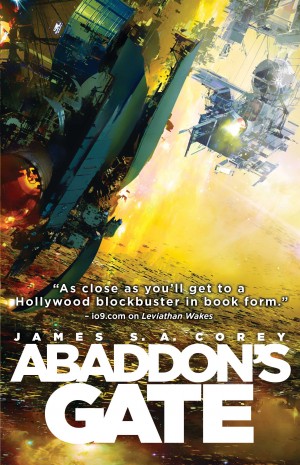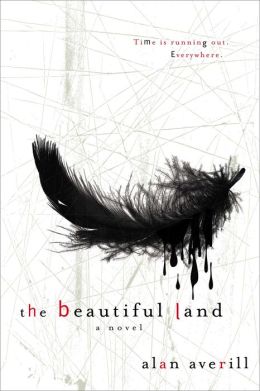Mark and I have posted Lots of new content on the SFFWorld blog over the past week, a few new reviews and what turned out to be the first interview for the SFFWorld blog since the soft launch/reboot.
Today, I posted my review of a novella from blogger and author Patrick Hester. He launched the Cord Cahill serials with the entertaining novella Cahill’s Homecoming:
When Cord attempts to ask people he knew, friends and former acquaintances, about his sister’s death, few are willing to answer. Cord searches out his sister’s estranged husband Charlie, who has become the town drunk as a result of first, their failed marriage and then, Kate’s death. The two men come to an uncomfortable understanding in their quest for justice.
The immediate thing that came to mind, that resonated with me while reading Cahill’s Homecoming was the television show Firefly, mainly because of the mix of far future and frontier settings. I wouldn’t say Cahill might resemble Malcolm Reynolds, but both men have a gruff exterior which belie a more sympathetic heart. This is best evidenced in Cord’s his words to Charlie, despite their differences and Cord’s displeasure with how Charlie treated Kate, “Today we’re family and family takes care of its own.”
On Sunday, Mark posted his review of the second installment of Steven L. Kent’s Clone Rebellion series, Rogue Clone. The series, initially published by Ace in the US is being issued in the UK by Titan Books. Mark likes how the series is shaping up.
Rogue Clone manages something very difficult from the off: to summarize the events of Book One without too much information dump and move the story on, all within the first thirty pages or so. Whilst war is brewing between the Unified Authority of the Orion Arm (that’s Earth to you and me) and the rebellious Outer Worlds, led by Crowley and the Morgan-Atkins (Mogat) separatists, Wayson Harris of the Unified Authority, now presumed dead, and his mercenary colleague Ray Freeman, are on the hunt for the leaders of the Mogat rebellion. Whilst reporting under cover back to his old mentor, Admiral Klyber, Wayson soon discovers where his nemesis, Amos Crowley of the Galactic Central Fleet, is hiding. We spend much of the beginning of this novel in space, with Harris undercover, guarding Admiral Klyber at a conference on board the Doctrinaire. Harris meets Admiral Huang again, a political enemy of Klyber’s and no friend of the Liberator clones, of which Harris is one of those remaining. Despite this, the conference appears to pass fairly successfully. However an incident after the conference leads to a plot which involves betrayal, political manoeuvring and a coup attempt, whilst in the background the influence of other partners in some rather fragile coalitions become increasingly important.
Yesterday, an interview Mark and I conducted with Ian C. Esslemont, co-creator of the Malazan world was posted on the SFFWorld blog to help celebrate the publication of his latest Malzan Tale Blood and Bone. Here's the direct link to the interview: http://sffworld.blogspot.com/2013/05/ian-c-esslemont-interview-for-blood-and.html.
A week ago, I posted my review to Chuck Wending’s The Blue Blazes, which publishes today. Although this was the first novel I read by the great bearded one of Pennsylvania, I’ve been following him on twitter pretty much since I joined and it will NOT be the last novel I read from him.
What could be a simple novel takes on an air of gravitas because of Wendig’s subtle yet powerful writing. Giving these totems, places, and people titles like The Underworld, The Boss, and The Organization, Wendig lends them a resonance that gives the story great, almost mythic power. This is further enhanced by the “journal clippings” prefacing each chapter, the journal of a lost, possibly insane and possibly fictitious, cartographer of The Great Below, John Atticus Oakes. Such chapter prefaces often work very well for my reading sensibilities and the fact that I found a resonance of sorts with what Chuck Wendig did here to what Mathew Stover (a favorite writer of mine) did in Blade of Tyshalle only heightened my enjoyment because Wendig did just as an effective job with these lost journal fragments.
…
It may be reductive to do the whole combine-and-compare thing, but think one part Hellboy, one part Mathew Stover, one part Big Trouble in Little China, and throw in a dash of The Sopranos, the film The Wrestler and pulp sensibilities, and you might have an idea of what a great stew of fun this novel really is. Although I wouldn’t go so far as to say that Mookie is a killer on the same level of Richard “The Iceman” Kuklinski, there’s a similar dichotomy and divide between the family life and the “work life” of the two men. What’s even better is that Wendig seems to only given readers a peek into the world Mookie and his daughter Nora inhabit.






















